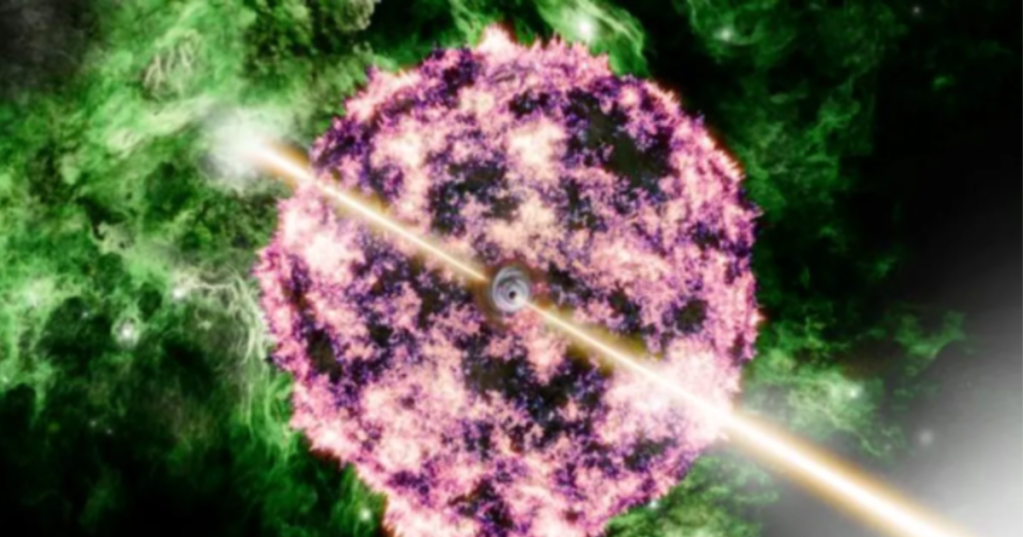
When it comes to astronomy, saying something is the biggest or brightest ever observed is quite a major statement.
With billions of stars, millions of galaxies, and an almost infinite amount of space, astonishing new things are found on a fairly regular basis, which is why it is impressive when something truly surprises experienced astronomers.
But that is exactly what happened when the gamma-ray burst named GRB 221009A was first discovered.
There have been a good number of gamma-ray bursts seen over the years, and they are all some of the brightest things in the sky.
This one, however, is an estimated 7seventy times brighter than anything else ever witnessed.
For this reason, astronomers have given it the nickname of B.O.A.T., which stands for Brightest Of All Time.
It was so bright, in fact, that it overwhelmed the James Webb Space Telescope that first saw it. The light saturated its instruments so that they could not produce accurate information.
Dr. Peter Blanchard of Northwestern University said in a statement:
“The so-called afterglow of the GRB was like the headlights of a car coming straight at you, preventing you from seeing the car itself. So we had to wait for it to fade significantly to give us a chance of seeing the supernova.”
The scientists waited about six months before pointing the massive telescope back at the area.
It has long been believed that massive supernovas like the one that produced this gamma-ray burst are what is responsible for creating heavy elements such as platinum and gold.
They were surprised that they did not detect these elements, saying:
“We did not see signatures of these heavy elements, suggesting that extremely energetic GRBs like the B.O.A.T. do not produce these elements. That doesn’t mean that all GRBs do not produce them, but it’s a key piece of information as we continue to understand where these heavy elements come from. Future observations with JWST will determine if the B.O.A.T.’s ‘normal’ cousins produce these elements.”
As mentioned above, gamma-ray bursts are not rare across the scope of the universe. In fact, NASA has a satellite called Swift that is dedicated to observing deep space to watch for new ones.
They have gathered together 500 gamma-ray bursts that it observed and combined them into a brief video, which you can watch below.
Observing gamma-ray bursts can help us to better understand the universe we live in.
And who isn’t intrigued by that idea?
